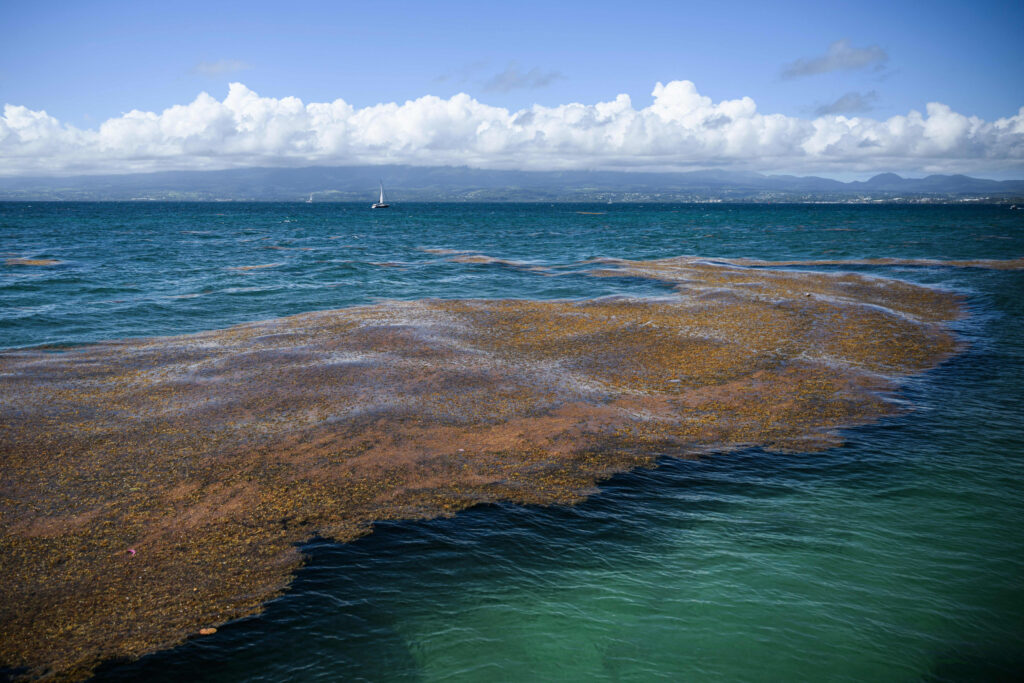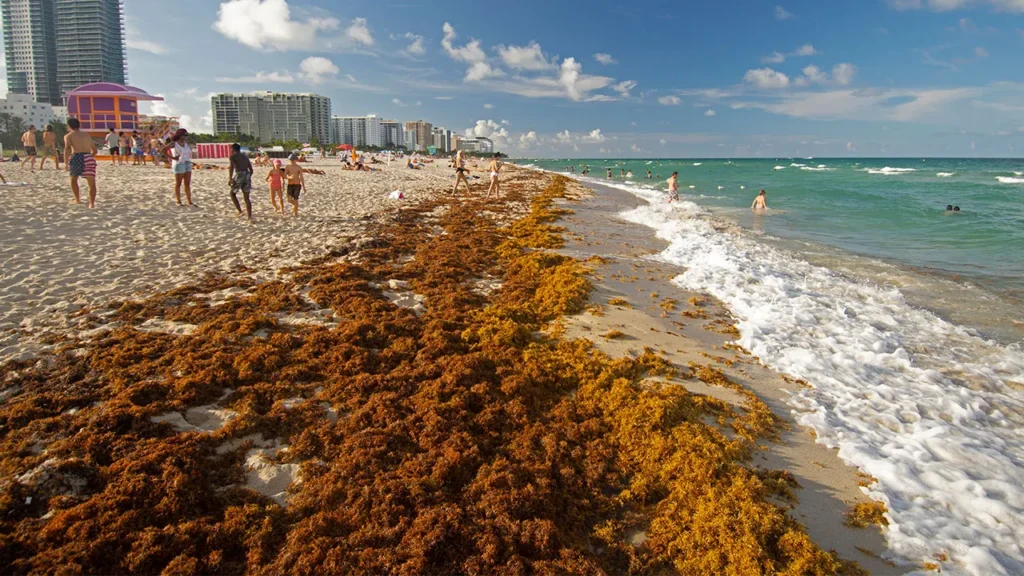
There is a giant blob of seaweed near Florida that can be seen from space.
Not a sentence you expect to hear as a major environmental situation affecting the planet, yet as climate change and humanity’s impacts on the sea increases, we will begin to see events like this become more frequent.
Sargassum blooms
This enormous clump of seaweed is made from sargassum, a genus of brown algae containing more than 300 species. Stated to be twice the width of the United States, this sargassum bloom is clearly unlike those of the past. Sargassum season is generally March through October, and scientists are worried about how large this clump has become so early on in the season. Seeing the trends of sargassum blooms increasing over the past couple years, they are also concerned about what these blooms would look like in future years.
Oceanographer Chuanmin Hu says that “last year the seaweed broke the record for the highest amount ever recorded in the Atlantic, with some 22 million metric tons of the stuff found across the ocean, according to the team’s calculations.” This past February, the mass had already reached six million metric tons and the season had not even started.
Called the Great Atlantic Sargassum Belt, this giant pouch of seaweed is causing officials to ask what the actual side effects and dangers would be of this mass. The major concern is regarding tourism in beaches. When sargassum algae rots, it releases hydrogen sulfide which has an odor similar to that of rotten eggs. Not only does this drive away tourists, the smell can be particularly painful to people with pre-existing breathing problems like asthma.
Some underlying causes
Since 2011, sargassum blooms have only been growing and this year’s 5,000 mile mass is likely the largest ever. According to the Miami Dade County website, the build up is caused by the “combination of an increase in nutrient runoff from the Amazon River, upwelling off the western coast of Africa and changing water temperatures.” With climate change only exacerbating the fluctuations of water temperature and other natural properties, it seems as if this bloom will not be the last.

The use of fertilizers is also causing a lot of runoff from land to leak into rivers which significantly boosts algae growth. The New York Times also proposes another source for this abnormal growth: “Fossil fuel emissions and the burning of biomass — such as trees after deforestation — also produce nutrients, he added, that could be helping the sargassum to grow.”
Takeaway
In the end, this is yet another side effect of humans’ effect on our home planet. Although relatively harmless, the magnitude of today’s Great Atlantic Sargassum Belt is likely not something that was expected a couple hundred years ago. Which poses the question: what can we expect in the next couple hundred years?

